Zoom
Trash

Microbiorobotics. Key Features Microrobotics is an area that is acknowledged to have massive potential in applications from medicine to manufacturing. This book introduces an inter-disciplinary readership to the toolkit that micro-organisms offer to micro-engineering. The design of robots, sensors and actuators faces a range of techology challenges at the micro-scale. This book shows how biological techniques and materials can be used to meet these challenges. Nano Bioreactors. Security. Military Interests. For several decades, scientists have cultured individual cells and single layers of cells in media outside the body.
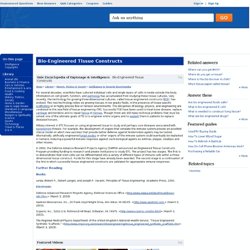
Information on cell growth, function, and pathology has accumulated from studying these tissue cultures. Very recently, the technology for growing three-dimensional cultures, called tissue engineered constructs ( TCE ), has evolved. This new technology relies on growing tissues in low gravity fields, in the presence of tissue-specific scaffolding or in highly precise flow or tension environments. The disciplines of biology, physics, and engineering are combined in this new field of tissue engineering (TE). Successful TCE have been used to treat bone disease, replace cartilage and tendons and to repair fascia in hernias . Military interest in ETC focuses on using engineered tissue to study and perhaps cure diseases associated with bioterrorism threats. Further Reading Books Lanza, Robert P., Robert Langer, and Joseph P. Electronic Sciperio, Inc., 5202–2 N.
Energy. Nelson. Since 2009 Cohen-Kfir, E., Lee, W., Eskandari, S. and Nelson, N. (2005).
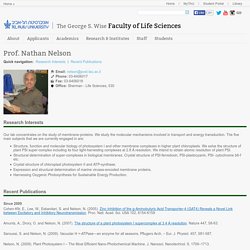
Zinc Inhibition of the g-Aminobutyric Acid Transporter-4 (GAT4) Reveals a Novel Link between Excitatory and Inhibitory Neurotransmission. Proc. Natl. History. Electro- spinning and Scaffolding. Issue 62 / March - April 2008 Tissue Engineering; Towards Spare Human Parts.

Plant extracts. Insect Proteins. Spider silk. Tissue Repair. Mussel 'glue' When it comes to sticking power under wet conditions, marine mussels are hard to beat.

They can adhere to virtually all inorganic and organic surfaces, sustaining their tenacious bonds in saltwater, including turbulent tidal environments. Northwestern University's Phillip B. Messersmith will discuss his research in a talk titled "Mussel-Inspired Materials for Surgical Repair and Drug Delivery" at the American Association for the Advancement of Science (AAAS) annual meeting in Boston. Heart Repair. Today we learn that a team of University of Louisville doctors at Jewish Hospital will soon perform the first phase one FDA-approved clinical trial using adult cardiac stem cells to treat heart disease.
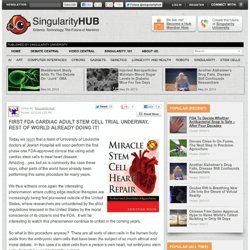
Amazing…yes, but as is commonly the case these days, other parts of the world have already been performing this same procedure for many years. We thus witness once again the interesting phenomenon where cutting edge medical therapies are increasingly being first pioneered outside of the United States, where researchers are unburdened by the strict regulations imposed in the United States by the moral conscience of its citizens and the FDA. In vitro meat. In vitro meat, also called victimless meat,cultured meat, tubesteak, cruelty-free meat, shmeat, and test-tube meat, is an animal-flesh product that has never been part of a living animal with exception of the fetal calf serum taken from a slaughtered cow.
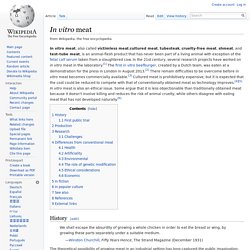
In the 21st century, several research projects have worked on in vitro meat in the laboratory.[1] The first in vitro beefburger, created by a Dutch team, was eaten at a demonstration for the press in London in August 2013.[2] There remain difficulties to be overcome before in vitro meat becomes commercially available.[3] Cultured meat is prohibitively expensive, but it is expected that the cost could be reduced to compete with that of conventionally obtained meat as technology improves.[4][5] In vitro meat is also an ethical issue.
History[edit] We shall escape the absurdity of growing a whole chicken in order to eat the breast or wing, by growing these parts separately under a suitable medium. in 1998 Jon F. First public trial[edit] 3D printed meat. Economic Study. In vitro Meat. Test-Tube Hamburger. On Monday, the clamorous animal rights group PETA announced it would award $1 million to the first person to come up with a way to make commercially viable in vitro meat by 2012.

The fake meat would have to be indistinguishable from the real deal, according to competition rules, and it would have to be cheap enough to succeed in the marketplace. In theory, this seems like an excellent idea, with the potential to ease the burden on the environment from meat production, reduce greenhouse gas emissions and improve human health. In practice, however, the chances of anyone actually winning the prize seem slim. $325,000 burger. Test-Tube Burgers. Willem van Eelen was born in 1923, the son of a doctor, and a child of colonial privilege.
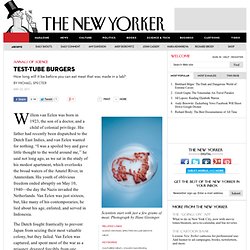
His father had recently been dispatched to the Dutch East Indies, and van Eelen wanted for nothing. “I was a spoiled boy and gave little thought to the world around me,’’ he said not long ago, as we sat in the study of his modest apartment, which overlooks the broad waters of the Amstel River, in Amsterdam. His youth of oblivious freedom ended abruptly on May 10, 1940—the day the Nazis invaded the Netherlands. Van Eelen was just sixteen, but, like many of his contemporaries, he lied about his age, enlisted, and served in Indonesia.
Stem Cells. Skin Cells Into Beating Heart. Dr.

Sheng Ding pioneered a method by which skin cells are converted to heart cells without going through an induced pluripotent stem cell state. It’s faster, more powerful, and user-friendly. No, I’m not talking about the latest generation tablet, I’m talking about the latest upgrade in stem cell research. The transformation of adult cells from one type to another is common enough. Cancer Fighting. T cells have the natural ability to target and destroy cancer cells and scientists have long since sought a way to recruit these innate defenders to rid the body of tumors. Weakening their ability to become an effective treatment, however, is the T cells’ short life spans.
But researchers at the RIKEN Research Center for Allergy and Immunology in Yokohama, Japan have devised a way to increase the number of cancer-fighting T cells and make up for their short life spans with the hope that the superior numbers of immune cells will enable them to overwhelm and conquer. The treatment centered around immune cells known as cytoxic T cells – also known as killer T cells – that recognize proteins on the surface of cells that signal that they are infected or cancerous.
In the current study the researchers worked with T cells that attack a specific kind of melanoma. Stem Cell Dissapeare. Engineered Organs. Organ Farming. Why transplant an organ when you can grow yourself a new one?
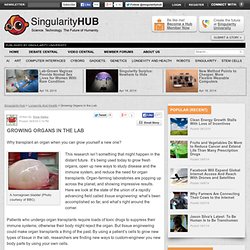
A homegrown bladder (Photo courtesy of BBC) This research isn’t something that might happen in the distant future. It’s being used today to grow fresh organs, open up new ways to study disease and the immune system, and reduce the need for organ transplants. Organ-farming laboratories are popping up across the planet, and showing impressive results. Printable Organs. 3D printing technology is hot and getting hotter. Whereas once 3D printers were limited to a few select materials, these days inputs include metal, plastic, glass, wood, and—human cells? Bet you didn’t see that coming. (Actually, if you’re a regular here, you probably did.) Bioprinting firm, Organovo, isn’t anywhere near 3D printing a hand or heart.
But a recently announced partnership with 3D modeling software giant Autodesk (maker of AutoCAD) might speed things up a bit. Windpipe in 1.5 Days. Tale of Two Windpipes.